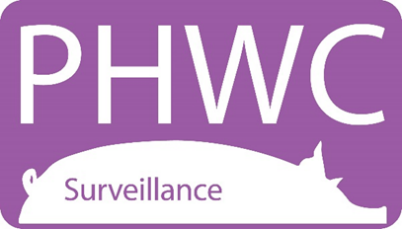- Home
- Knowledge library
- PHWC Surveillance
PHWC Surveillance
The PHWC's Surveillance subgroup gives advice to the council on proposals for effective surveillance of pig health and welfare in England.
This is achieved through integrative work across the industry in the same manner as the main PHWC.
This group’s main focus is to provide horizon scanning on new pathogens and emerging diseases of importance to the pig industry and on changes in levels of endemic disease within the UK.
The group then uses this information to formulate strategies of benefit to the UK pig industry and to recommend a course of action in the prevention, reduction or eradication of significant diseases.
The provision of a robust, reliable and integrated disease surveillance system forms one of the ongoing long-term strategic aims for this group.
PHWC Surveillance aims
Over the past two years, with the introduction of Porcine Endemic Diarrhea virus (PEDv) controls, the group has focused on disease control procedures, as well as continuing to identify and evaluate disease threats through approaches to surveillance and monitoring. Much of the work is carried out in partnership between the industry and government.
As a result of notifiable disease status and concerns over the threat from PEDv, a contingency plan was developed by PHWC and published in 2016. The key element of the plan was to identify, contain and eliminate PEDv in the face of an outbreak.
The group monitors the progress of exotic diseases around the world. It assesses the potential for those diseases to enter the UK and proposes steps to take to reduce the risk of introduction.
This information is provided via representation on the APHA Pig Expert group, through contact with the government monitoring of international disease and personal contacts between Surveillance group members and their international contacts.
PHWC Surveillance update
On 15 September 2016, the PHWC Surveillance subgroup held a round table on syndromic surveillance.
The primary objective was to explore the concept of syndromic surveillance and how to obtain disease data from pig farms to assess disease trends and promptly detect possible new and emerging threats in a sustainable and cost-effective manner.


